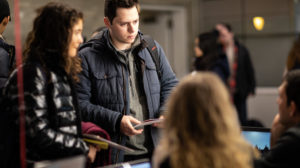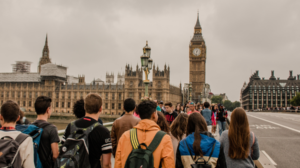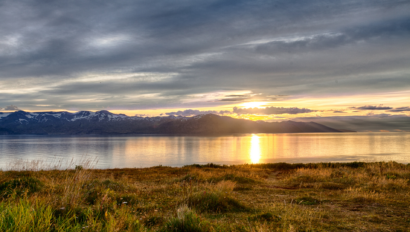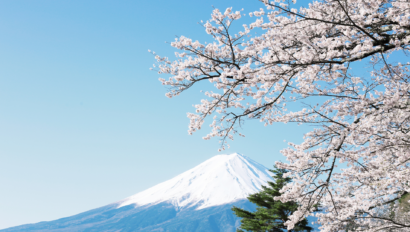Ohio [Oh -hee-oh] Street is a long road that bisects government buildings in downtown Dar Es Salaam. In my first week abroad in Tanzania, I couldn’t help but look for interesting names and places that reminded me of home. I spent many summers in Ohio as a kid and needed to know why this road was named after an obscure state in the US. I learned the street commemorates a sisterhood partnership with residents in Mansfield, Ohio, created by an ambassador in the 80’s. Back then, most residents of Tanzania when asked where they would like to visit in the US would pass up NYC, and instead opt for this small town in Ohio. To this day the origin of the name of the street has seemed to drift away and has melted into Tanzanian culture leaving a street known as Oh-hee-oh.
Oh-Hee-Oh Street set me on a path this past week to critically compare the differences between life in Tanzania and the United States. And the truth is, while American culture has reached most corners of the world, in my opinion, the city of Dar es Salaam remains mainly untouched. This is clear in the lack of tourists who opt to travel to the beaches of Zanzibar or the wildlife in the Kilimanjaro region instead of Dar while in Tanzania.
First, a little history that I learned may help explain the layout of the city and its culture. The port city of Dar was a German and then a British colony until independence in the 1960s. When the city was designed, racial zoning created barriers between the colonial Europeans, the native population, and the Indians. This is evident today as you walk through the government center (the region zoned for the Europeans), and there are wide roads and large building plots. As you enter the African-zoned communities, the roads were not originally designed for cars, and the plots the buildings sit on are a lot smaller. At independence, the first president, who everyone in Tanzania reveres, created national pride for Tanzania. He also promoted foreigners to move to the newly independent country.
As a result, modern-day Dar has the city planning of colonial Europe with a blend of various African, Arabic, and Indian cultures all located in the tropical coast of East Africa. With such an amalgamation of cultures, I am reminded a little of the United States, but something is a little different on the street. Everything is pole pole. A phrase many Tanzanians will repeat to you in conversation. This literally means “slowly” but is really a way of life for Tanzania’s inhabitants. Along this vein, you will also hear hakuna matata, which everyone who has seen the Lion King will remember means “no worries” or “no troubles.” This way of living is vastly different from the hustle-and-bustle culture of the US.
This isn’t the only difference I noticed between the way of life in the US and the way of life in Tanzania. This past week our dialogue has had the opportunity to meet with Conference of Party Speakers, Government Director Generals, students, and climate scientists. All of these Tanzanians welcomed our visit with open arms and were happy to engage in a scientific exchange of ideas and network. Based on the interactions with those involved in the climate field and my interactions on the street, I have learned Tanzanians have a culture of friendliness. This took some getting used to at first. In Boston, I am guilty of looking down at my phone and popping headphones in to avoid conversations with strangers. In Dar, conversations with strangers are embraced, and once you are open to giving everyone you pass a “mambo,” you appreciate how nice it is to be present with your fellow strangers. This took form when we were at the beach and noticed a group of younger Tanzanians playing guitar. We started talking to them, and then they played their music, we talked some more, and before you knew it we had hung out together for half an hour. In the end, we received their Whatsapp and were told to stay with them the next time they were in Dar.
This exchange is one I can’t imagine in the US and is not unique in Dar. A part of our dialogue is preparing presentations and working with Tanzanian students. One student I met was engaged in similar research I had partaken in the year prior. In the end, we exchanged ideas and developed a real bond over our interest in remote sensing and exchanged emails to reach out in the future.
Another refreshing perspective I noticed when participating in our model UN simulation with Tanzanian students was an insight into Tanzanian politics. Because of the political legacy left after independence, generally, Tanzania is unified under one national identity. The idea of a divided country puzzled Tanzanian students, and we tried to explain why working on national issues like climate can be divisive and difficult to achieve. Tanzania’s government is set up such that regions and cultures across the country are represented fairly, and still, politics remains less divided than within the US.
On a road in Dar you may look up to see American culture from signs like “Barack Obama Boulevard,” “Las Vegas Casino,” or even “Ohio Street.” Still, when you return your gaze to the road in front of you, you may snap into reality when you realize you’re in a bijaji (tuk tuk) driving on the left side of the road. All of this to say Dar is unlike any city I have visited. Upon first glance, I could only appreciate and understand the familiar. Taking time this past week to get out into the Tanzanian science community as well as out onto the street, has allowed me to reevaluate my understanding of the natural flow of exchange of culture between the US and other countries. Perhaps the US culture should adopt pole pole and hakuna matata and learn to be more influenced by countries with a happier outlook on life.
Signing out from Dar. Next stop, the island of Zanzibar!











